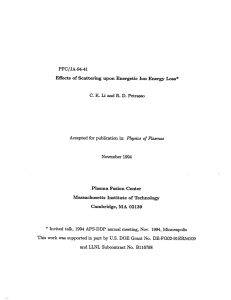Solutions to First Exam 1.5 · 10 K and P
advertisement
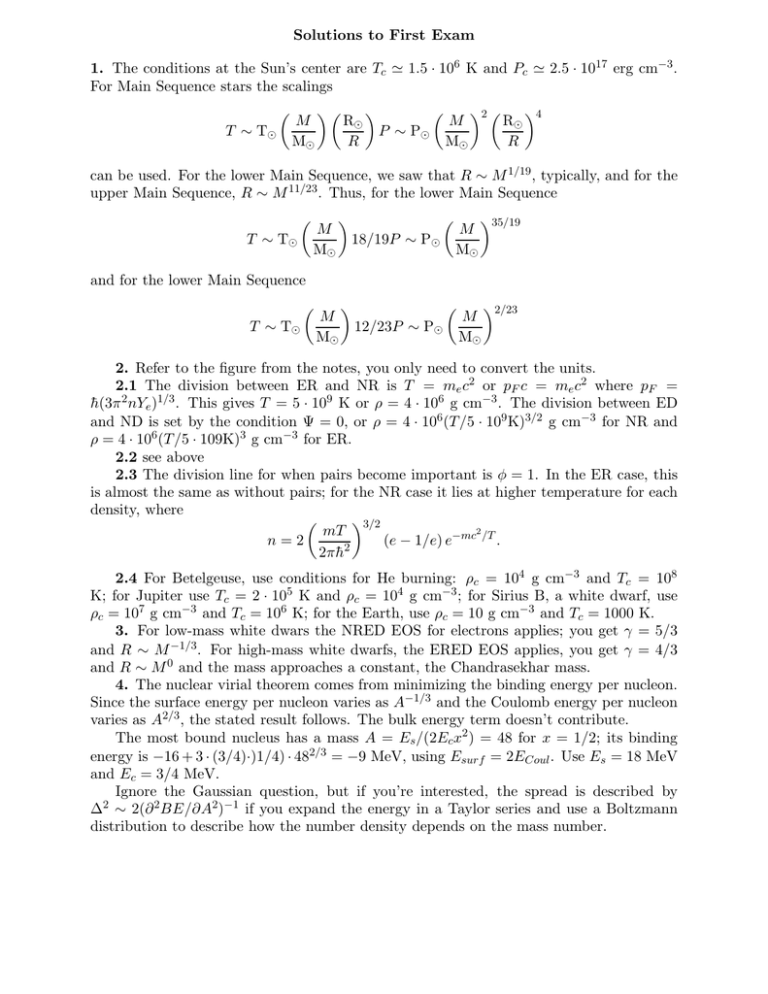
Solutions to First Exam 1. The conditions at the Sun’s center are Tc ≃ 1.5 · 106 K and Pc ≃ 2.5 · 1017 erg cm−3 . For Main Sequence stars the scalings T ∼ T⊙ M M⊙ R⊙ R P ∼ P⊙ M M⊙ 2 R⊙ R 4 can be used. For the lower Main Sequence, we saw that R ∼ M 1/19 , typically, and for the upper Main Sequence, R ∼ M 11/23 . Thus, for the lower Main Sequence T ∼ T⊙ M M⊙ 18/19P ∼ P⊙ M M⊙ 35/19 and for the lower Main Sequence T ∼ T⊙ M M⊙ 12/23P ∼ P⊙ M M⊙ 2/23 2. Refer to the figure from the notes, you only need to convert the units. 2.1 The division between ER and NR is T = me c2 or pF c = me c2 where pF = h̄(3π 2 nYe )1/3 . This gives T = 5 · 109 K or ρ = 4 · 106 g cm−3 . The division between ED and ND is set by the condition Ψ = 0, or ρ = 4 · 106 (T /5 · 109 K)3/2 g cm−3 for NR and ρ = 4 · 106 (T /5 · 109K)3 g cm−3 for ER. 2.2 see above 2.3 The division line for when pairs become important is φ = 1. In the ER case, this is almost the same as without pairs; for the NR case it lies at higher temperature for each density, where 3/2 2 mT n=2 (e − 1/e) e−mc /T . 2 2πh̄ 2.4 For Betelgeuse, use conditions for He burning: ρc = 104 g cm−3 and Tc = 108 K; for Jupiter use Tc = 2 · 105 K and ρc = 104 g cm−3 ; for Sirius B, a white dwarf, use ρc = 107 g cm−3 and Tc = 106 K; for the Earth, use ρc = 10 g cm−3 and Tc = 1000 K. 3. For low-mass white dwars the NRED EOS for electrons applies; you get γ = 5/3 and R ∼ M −1/3 . For high-mass white dwarfs, the ERED EOS applies, you get γ = 4/3 and R ∼ M 0 and the mass approaches a constant, the Chandrasekhar mass. 4. The nuclear virial theorem comes from minimizing the binding energy per nucleon. Since the surface energy per nucleon varies as A−1/3 and the Coulomb energy per nucleon varies as A2/3 , the stated result follows. The bulk energy term doesn’t contribute. The most bound nucleus has a mass A = Es /(2Ecx2 ) = 48 for x = 1/2; its binding energy is −16 + 3 · (3/4)·)1/4) · 482/3 = −9 MeV, using Esurf = 2ECoul . Use Es = 18 MeV and Ec = 3/4 MeV. Ignore the Gaussian question, but if you’re interested, the spread is described by 2 ∆ ∼ 2(∂ 2BE/∂A2)−1 if you expand the energy in a Taylor series and use a Boltzmann distribution to describe how the number density depends on the mass number. 5. The Coulomb barrier depends sensitively on the charges, and these are least for smaller nuclei. But the penetration factor also depends on temperature, so any Coulomb barrier can be overcome at high enough temperature. 6. Nuclear burning and neutrino emission balance. 7. The isothermal solution has ρ ∼ r −2 , so that m ∝ r. This could correspond to an interstellar cloud core prior to its collapse in star formation.

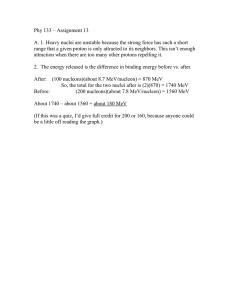
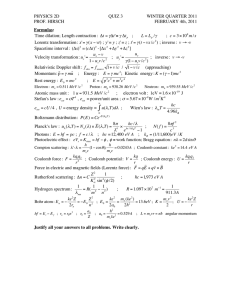


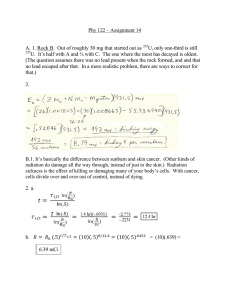

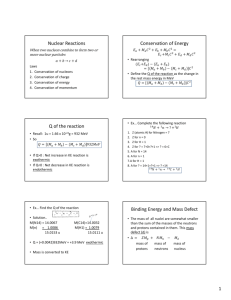
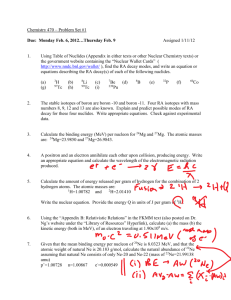
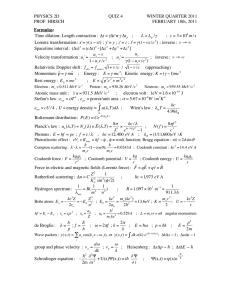

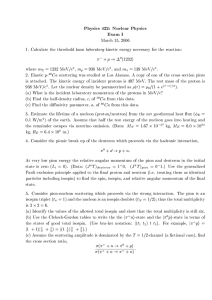
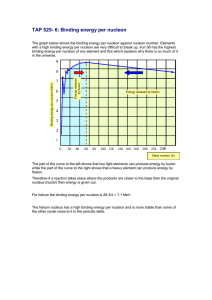
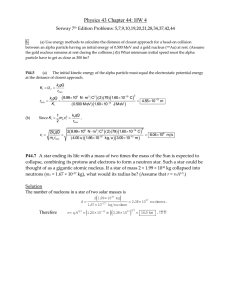
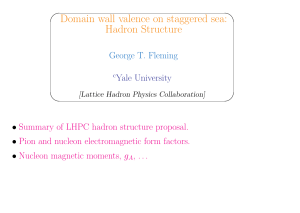
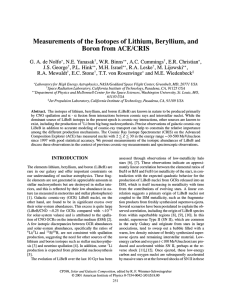
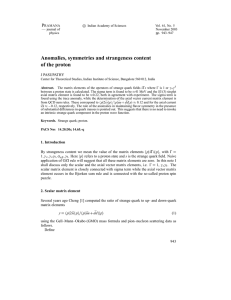
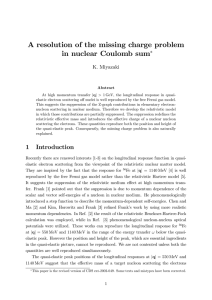
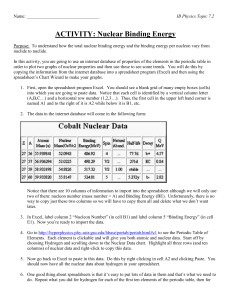
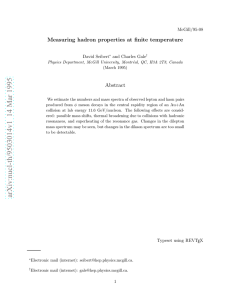
![arXiv:1212.2356v2 [cond-mat.supr-con] 4 Jan 2013](http://s2.studylib.net/store/data/018410713_1-eb2cbe2ff4cc6de7ca1d5dd4299f69d7-300x300.png)
